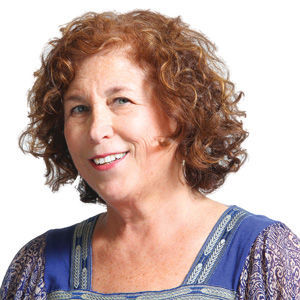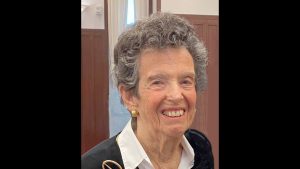Ensuring ‘A Seat for All’ at the seder table

Published April 18, 2019
Liessa Alperin has been exceptionally busy these past few weeks. As director of innovative learning and engagement at Congregation B’nai Amoona, Alperin has been planning the synagogue’s “A Seat for All” seder, which is scheduled for 6 p.m. Saturday night (April 20).
The seder is sold-out with roughly 250 people attending. But its structure, intent and tone are all adaptable no matter who is hosting, as it strives to make every person at the seder table — regardless of whatever physical, developmental, neurological and/or learning challenges he or she may face — feel as comfortable and as welcome as possible.
“I reached out to many different populations because I really didn’t know ultimately who is coming,” said Alperin, who explained the congregation had received a grant from Jewish Federation and the Kranzberg Family Foundation for the inclusive seder. “When you talk about how to make the experience good for a certain population, the answer, ultimately, is how do you make it good for everybody?”
To that end, Alperin has put together a Haggadah supplement in both Hebrew and English that makes use of some of the resources available from Gateways, a nonprofit educational service that help students with diverse learning needs to succeed in Jewish educational settings and live a meaningfully Jewish life. She also put me in touch with several local people and other national organizations that champion inclusion. What follows are some of the suggestions gleaned from the information they provided:
• Prepare children, especially ones who don’t take to change or new experiences easily, for the holiday and what to expect. This could include picking out an age-appropriate book that explains some of the traditions and meanings of Passover as well as creating a schedule together of the events leading up to the seder.
Lisa Litvag, for example, spends time prior to the seder talking about it with her 14-year-old son, who is on the autism spectrum.
“We make sure he understands what we expect from him and what he can expect from the evening,” said Litvag, a Shaare Emeth congregant. “We walk through the major moments of the seder so that he can participate at a higher level. We also give him jobs, such as choosing a song or hiding the afikomen, so that he can feel more a part of the festivities.”
• Loosen expectations about what to wear. Granted, a seder is not a night out at Busch Stadium, but it doesn’t need to be a formal affair, either. If you are hosting, suggest that guests dress comfortably, including children who may prefer wearing something cozy and familiar.
• Consider the meal. If you are invited to a seder and someone in your party has special dietary needs, or isn’t keen on trying new foods, ask if it’s OK to bring along a dish or two to substitute. Likewise if you are hosting, reach out to guests to see if they have any food allergies or require dietary accommodations.
• Move around. Most seders start and end at the dining room table, with guests often seated there for several hours. Start the seder in the living room or den, then move to the table. Plan opportunities to take breaks and walk around, or let guests know they are free to roam. Also, consider chairs of varying heights and ones without arms as well as open seating, especially if any of your guests use a wheelchair.
• Stock up on “fidget” tools. Alperin calls them “sensory manipulatives,” explaining that adults as well as children with special needs such as autism may require extra stimulation. She suggests having sugar cubes at the table to build pyramids, and squeeze toys or small puzzles. She also uses a tablecloth at her home seder that encourages guests to write or draw on it.
• Designate a “sensory room” where guests can go if they are over-stimulated or need a break. This could be a bedroom, garage or really any room that isn’t being used for the seder.
Alperin says B’nai Amoona had a sensory room for its Purim carnival called Esther’s Escape, which 36 adults and children visited, and will have something similar at its upcoming seder. Such a room can take the burden off of parents whose children may have certain ticks or conditions that cause sudden outbursts or meltdowns.
• Consider appetizers on the table. Crudité and dips, for example, can help people who have low-blood sugar, or just need a little nosh.
• Introduce visuals. Many people are visual learners and have trouble processing information when reading or listening to others read. Pictures are a way to help compensate for that. At her own seder, Alperin prepares a visual chart to hang on a wall, which outlines the major themes of the Hagaddah and certain foods that are eaten at the meal.
• Set ground rules. Since this seder is for everyone, certain concessions are purposely being made for guests whose behavior may be erratic or different than what is commonly thought of as “socially acceptable.”
“It’s critical for people at the table to understand that this is an inclusive seder,” said Litvag. “I explain there may be things that will be disruptive and talk about what may happen or what they should expect because you want everyone at the seder to be comfortable.”
For more tips and resources, including downloadable Haggadahs for people with special needs, go to:
• Gateways at www.jgateways.org/Resources/Passover
• Matan, which educates Jewish leaders about ways to support children with special needs, at www.matankids.org/resources/printable-resources/#passover.














